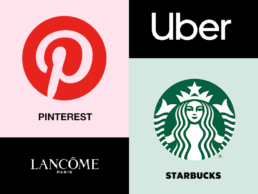Real-world Examples of Successful Progressive Web Applications: Case Studies and Best Practices
Introduction
Progressive Web Applications (PWAs) have become increasingly popular, offering app-like experiences through web browsers. Many businesses have embraced PWAs to improve user engagement, performance, and conversions. In this article, we’ll explore successful case studies and best practices to inspire your PWA implementation.
1. Uber: Enhancing Performance and Accessibility
Uber, the global ride-hailing company, optimized its PWA to provide a faster and more accessible booking experience. By leveraging service workers, Uber enabled offline functionality, allowing users to book rides even with limited or no internet connectivity. This enhanced accessibility expanded their user base and improved overall customer satisfaction. Users experienced faster load times, smoother transitions, and a seamless user interface, resulting in increased engagement and repeat bookings.
Best Practice: Optimize performance, minimize data usage, and leverage service workers for offline functionality.
2. Pinterest: Optimizing Load Times and User Engagement
Pinterest, the popular visual discovery platform, revamped its mobile experience with a PWA to deliver faster load times and improve user engagement. By implementing lazy loading techniques, Pinterest prioritized the loading of visible content, allowing users to start exploring without delay. Additionally, they optimized image loading to minimize data usage while maintaining image quality. These optimizations resulted in significantly improved load times, increased user engagement, and a boost in revenue through user-generated ad interactions.
Best Practice: Prioritize visible content with lazy loading and optimize image loading for improved performance.
3. Starbucks: Streamlining Ordering Process and Engaging Customers
Starbucks, the renowned coffee chain, leveraged a PWA to streamline its ordering process and engage customers more effectively. With the PWA, users could place orders ahead of time and skip the queue, resulting in a faster and more convenient experience. The intuitive interface improved overall customer satisfaction, resulting in increased sales and repeat business.
4. Lancôme: Elevating the Mobile Shopping Experience
Lancôme, the luxury cosmetics brand, transformed its mobile shopping experience with a PWA. The PWA offers a visually appealing interface with high-quality product imagery, detailed product descriptions, and a seamless checkout process. Personalized product recommendations and tailored content recommendations provide an enhanced user journey, assisting customers in discovering relevant products.
The PWA’s optimized performance ensures fast load times, smooth navigation, and responsiveness, creating a delightful shopping experience. By focusing on delivering an immersive and user-centric mobile shopping experience, Lancôme’s PWA increases user engagement, improves conversion rates, and fosters customer loyalty.
Best Practice: Implement engaging features like personalized recommendations and user-friendly checkout processes.
Conclusion – Get Your PWA Template
These case studies demonstrate the effectiveness of PWAs in improving performance, user experience, and business results. By adopting best practices such as optimizing performance, leveraging offline capabilities and delivering personalized experiences, businesses can harness the power of PWAs for success.
Enabled PWAs
The best place to start creating a PWA for your business is Enabled’s Portfolio. We dedicated our experience to create the most optimised, fast and modern Progressive Web Apps on the web.
Take a look at some of the best selling Mobile Kits & PWA templates here.
In conclusion, Progressive Web Applications offer significant advantages for businesses. Uber’s PWA enhanced accessibility and improved booking experiences, while Pinterest focused on optimizing load times and user engagement. Starbucks streamlined the ordering process, while Lancôme elevated the mobile shopping experience with personalized recommendations and optimized performance.
By learning from these successful case studies and implementing best practices, businesses can unlock the potential of PWAs to enhance user engagement, increase conversions, and stay ahead in the digital landscape.





